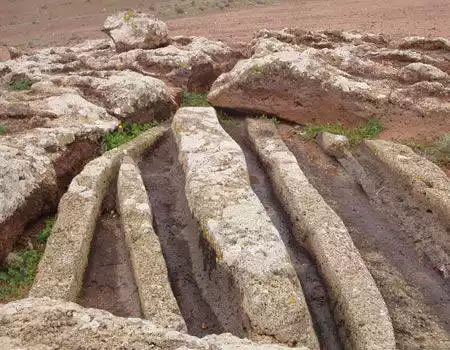
One of the most unique elements in the archeology of Lanzarote is represented by these cheese makers. Their name refers to the resemblance they have to a gigantic mold for making cheese, although, of course, they have nothing to do with such tasks. In fact, at present, their usefulness and meaning remain an enigma.
There are references to three of these cheesemakers:
The Quesera de Zonzamas.
The Quesera de Bravo.
A third cheese dairy, discovered in San Bartolomé, when excavating the foundations of a house, was destroyed.
The majos (aboriginal) made these constructions on a flat surface, carving into the basaltic rock a series of elongated channels, more or less parallel, several meters long, and, in turn, presenting small internal divisions.
In this way, each of the grooves could have been formed by the wear caused by grinding. This theory is supported by the fact that lithic instruments have been located next to them, whose function was to crush or grind.
However, other interpretations have been made, considering that it could serve to collect water or be a place of cultural use. Thus, these canals could have been used to collect the milk spilled in the offerings, which, according to the chroniclers, formed part of the religious ritual of the Lanzarote natives.
However, their location and characteristics do not seem to respond to the description made of these shrines. In the north of the African continent, in Morocco, this type of construction is also known, without a definitive interpretation.
It is close to the town of Zonzamas, between the Zonzamas and Maneje mountains, with views of Arrecife
La Quesera de Bravo, is located in the middle of Malpaís de La Corona, close to the Jameos del Agua, not far from a series of deep houses